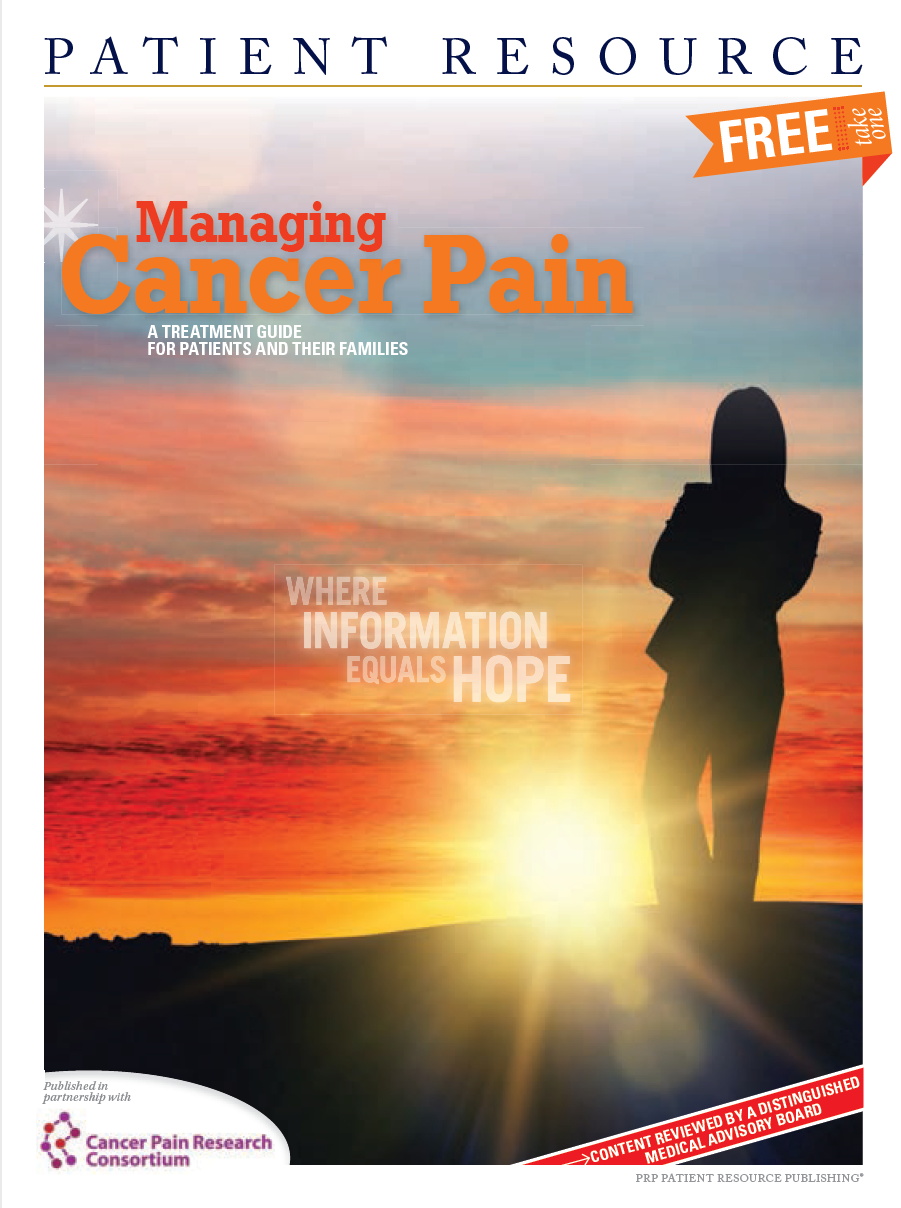Managing Cancer Pain
Defining cancer-related pain
Cancer-related pain is caused by several different factors; in most cases it is directly related to the cancer itself and the location of the tumor(s). As a tumor grows, it can press on internal organs, tissues and joints, creating pressure that ultimately leads to pain in that specific area.
Pain can also be caused by cancer that has spread to bone. This pain is typically felt in the back, pelvis and hips, as these bones are the most common sites of cancer spread (metastasis). Cancer-related pain may be felt in parts of the body other than where the primary tumor is located, especially in advanced disease.
In addition to cancer-specific pain, diagnostic procedures and treatments, including surgery, chemotherapy and radiation therapy, may cause different types of pain.
- After surgery, pain is usually felt in the area of the surgery. This pain will gradually lessen as the body heals and recovers.
- The pain or discomfort caused by chemotherapy and radiation
therapy can be mild to severe, but often (although not always) ends when treatment does. - Sometimes, a hormone imbalance or treatment-related nerve damage may contribute to chronic pain.
BY THE NUMBERS
Persons with cancer who
Cases of cancer-related pain that can be managed
The biggest myth
The biggest myth about pain related to cancer is that people with cancer must endure it.
It’s true that pain affects most people with cancer, but there are now many ways to relieve cancer-related pain. It’s important to understand these options and learn which might work best for you. Although success cannot be guaranteed, it is reasonable to expect your doctors to work diligently toward addressing your pain.
About 90 percent of all cancer-related pain can be successfully managed, yet only half of people with pain seek relief.
Doctors have noted many reasons why patients do not seek help for pain relief:
- Guilt – they don’t want to hurt their doctor’s feelings.
- Fear – they are afraid that if they hurt, it means the treatment isn’t working or the cancer has gotten worse.
- Acceptance – they feel that pain is just a part of the cancer experience.
- Pride – they feel they should just be tough, live with the pain and not complain.
- Fear of addiction – many patients may forgo medications for fear of becoming addicted.
- Overwhelmed feeling – there are already too many doctors, appointments and medications to handle; they don’t want to add yet another aspect to their treatment plan.
You should not let any of these reasons keep you from finding pain relief. Every person with cancer is encouraged to seek relief.
Benefits of pain relief
Pain relief has many benefits beyond the obvious one of being more comfortable. Studies show that when people with cancer get their pain under control, they are much more likely to finish their treatment on schedule.
Pain relief also enables people to be more active, boosting their health and emotional well-being. Some evidence even suggests that survival is longer when pain is managed effectively.
Harmful effects of
unrelieved pain
Unrelieved pain affects every part of your life.
Your body’s disease-fighting abilities are lowered when you’re in pain, interfering with your health and recovery in general. Other side effects can also be intensified when you’re in pain, and depression often occurs when pain is unrelieved over a long time. In addition, pain affects your ability to sleep, work and maintain your relationships.
These harmful effects make pain too important to ignore.
I had a pump implanted that delivers medications directly to my spinal fluid and spinal cord. Since the pump was placed, I am off almost all pain pills.
I thought pumps were only for those who were on their last leg. I don’t think that way now. I am very pleased with the way it controls my pain and am very glad I got it.

Wilella
Patient AmbassadorMy family and friends could not believe the difference in my physical and
emotional state since the pain pump was placed. With a device as simple as this, cancer patients and others in pain can extend and improve quality of life.

Karen
Patient AmbassadorI chose a percutaneous cordotomy — turning off the pain fibers in my spinal cord using a small electrode — to try to relieve my pain. The procedure was easy, and the pain was instantly gone! Now I can get up and take care of myself. I can walk around and don’t need any pain medications. I couldn’t have asked for a better result.

Steve
Patient AmbassadorWhen I was diagnosed with cancer, my biggest fear was pain, and the pain I had was beyond anything I had ever imagined. I had an intrathecal drug delivery system implanted, and I can’t believe how effective the pump is. My quality of life has significantly improved beyond what I expected. Now I feel I can face any treatment I need to for cancer.

Cathy
Patient AmbassadorDisclaimer: Information presented is not intended as a substitute for the advice given by your health care provider.
Although Patient Resources strives to present only accurate information, readers should not consider it as professional advice, which can only be given by a health care provider. Patient Resource, its authors, and its agents shall not be responsible or in any way liable for the continued currency of the information or for any errors, omissions or inaccuracies in this publication, whether arising from negligence or otherwise or for any consequences arising therefrom.
Patient Resource, its authors, and its agents make no representations or warranties, whether express or implied, as to the accuracy, completeness or timeliness of the information contained herein or the results to be obtained from using the information.
If medical or other expert assistance is required, the services of a competent professional person should be sought.
